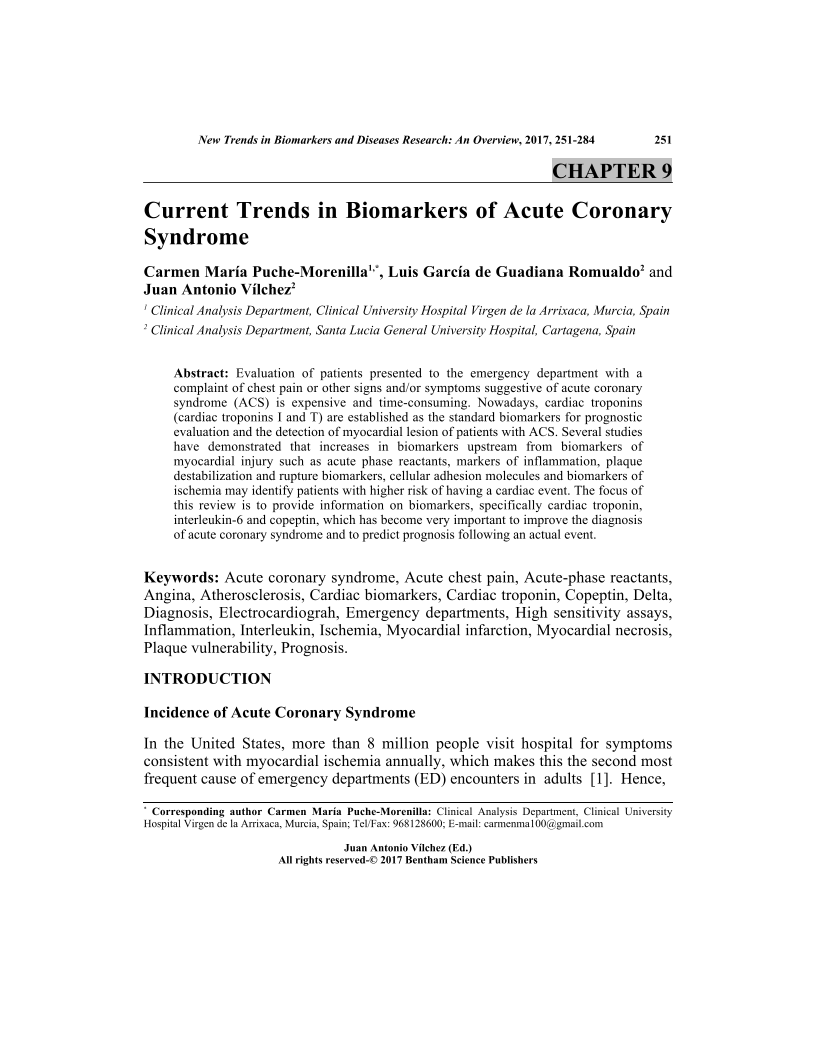Current Trends in Biomarkers of Acute Coronary Syndrome

- Authors: Carmen María Puche Morenilla1, Luis García de Guadiana Romualdo2, Juan Antonio Vílchez3
-
View Affiliations Hide Affiliations1 Clinical Analysis Department, Clinical University Hospital Virgen de la Arrixaca, Murcia, Spain 2 Clinical Analysis Department, Clinical University Hospital Virgen de la Arrixaca, Murcia, Spain 3 Clinical Analysis Department, Clinical University Hospital Virgen de la Arrixaca, Murcia, Spain
- Source: New Trends In Biomarkers and Diseases Research: An Overview , pp 251-284
- Publication Date: September 2017
- Language: English
Current Trends in Biomarkers of Acute Coronary Syndrome, Page 1 of 1
< Previous page | Next page > /docserver/preview/fulltext/9781681084954/chapter-9-1.gif
Evaluation of patients presented to the emergency department with a complaint of chest pain or other signs and/or symptoms suggestive of acute coronary syndrome (ACS) is expensive and time-consuming. Nowadays, cardiac troponins (cardiac troponins I and T) are established as the standard biomarkers for prognostic evaluation and the detection of myocardial lesion of patients with ACS. Several studies have demonstrated that increases in biomarkers upstream from biomarkers of myocardial injury such as acute phase reactants, markers of inflammation, plaque destabilization and rupture biomarkers, cellular adhesion molecules and biomarkers of ischemia may identify patients with higher risk of having a cardiac event. The focus of this review is to provide information on biomarkers, specifically cardiac troponin, interleukin-6 and copeptin, which has become very important to improve the diagnosis of acute coronary syndrome and to predict prognosis following an actual event.
-
From This Site
/content/books/9781681084954.chapter-9dcterms_subject,pub_keyword-contentType:Journal -contentType:Figure -contentType:Table -contentType:SupplementaryData105

